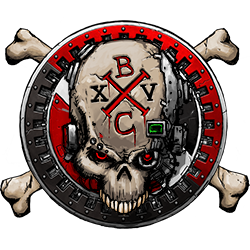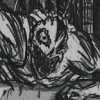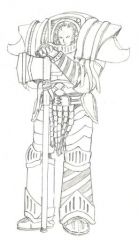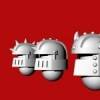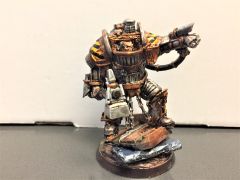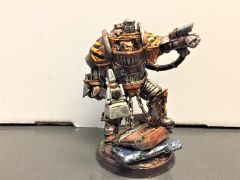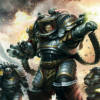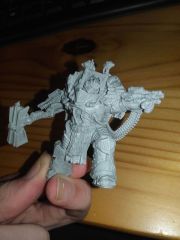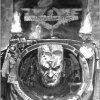Search the Community
Showing results for tags 'Perturabo'.
-
Hey all, After a few months using BnC, and a few threads that I started but never really had the motivation to update regularly (normally because they involved armies with difficult or time-consuming paint schemes) I've decided to cut down my posting to just two threads: This one, for my Iron Warriors, and a soon-to-be-made WIP General thread. I'm keeping this IW thread separate because they're bloody easy to paint, and it'll help motivate me to actually create a usable and fully painted army. Hopefully I can give these guys some fluff too. Models here will hopefully be kitbashed/slightly converted to make unique and interesting models. I plan to make Iron Warriors for both 30k and 40k, hopefully making newer versions of characters as various fates befall them and time passes. Some of these men will turn out loyalist, others renegade and others again full blown chaos worshipping traitors. As the models come so will the fluff. Kicking off this thread with Narik Dreygur, a model I got as a one off and enjoyed painting so much that it inspired me to start painting and building more of the IVth legion. And a Veteran Sergeant who I've named Morticus Ghaul And a picture of both together: Let me know what you think with a comment, thanks for reading
- 108 replies
-
- Iron Warriors
- Perturabo
- (and 6 more)
-
From the album: Aldurukh archive
Perturabo, The Hammer of Olympia, The Lord of Iron, the Clockwork King, and The Emperor's Toy Maker. Primarch of the IV, legion Iron Warriors. -
From the album: Lord Krungharr's Iron Warriors
My custom made Perturabo. Made from a big old metal Obliterator and many other random bits. So good to have the big man! I didn't have ammo belts so he got wrist mounted lasblasters instead (which will run out of ammo far less often :D ) He's breached the defense line and smashed it to bits....-
- Iron Warriors
- Primarch
-
(and 1 more)
Tagged with:
-
From the album: Custom Perturabo Project
At long last, really not that long, kitbashed Perturabo is painted! Ready for his first game....hopefully this year? Depends if Nurgle remains strong on Terra or not. -
From the album: Bubbles' Iron Warriors
Perturabo before i painted him -
I guess the first thing to establish is what Tallarn is. Per the Black Library website, the contents of Horus Heresy Book 45 are the novella Tallarn: Executioner, the novel Tallarn: Ironclad, and the short stories “Tallarn: Siren” and “Tallarn: Witness”. “Siren” and “Witness” are, by virtue of their size, the easiest to render a verdict to. “Witness” was a poignant e-short, and despite providing a look at the aftermath of the battle for Tallarn, it serves well as an introduction to the anthology. Most readers familiar with the old lore concerning this battle know the broad details - to include the outcome - but French captures well the cost of the victory. Tallarn: Executioner, the novella that follows, features, in my humble opinion, some of French’s best writing. There are bits that I thought were a bit too telegraphed - stock characters and military tropes, if you will - early on in the story, but as a whole Executioner is a solid bit of immersion into the kind of hell fighting on the deadly surface of Tallarn had to be. I dislike classifications like “Best Warhammer Universe Tank Combat Story” because they strike me as specific to the point of uselessness (just because the tank parts are great doesn’t mean everything else might not be awful), but in this case I really can’t recall someone nailing that kind of action and atmosphere in a while. “Siren” is the third tale told in the anthology. Like the novella it precedes, it gives a perspective on the conflict on Tallarn that is limited... but all the more powerful for it. That sense of isolation - of not knowing what is happening throughout the planet, of where friend or foe are, of what can be done, if anything at all - is something French strove for, and “Siren” does a great job of maintaining that after Executioner. Beyond that, though, “Siren” is just a very good story. The objective is clear, the characters are both apropos to the setting and likeable, and there are some powerful scenes - not the least of which are the closing scenes and the ending itself. The suspense during the former is palpable; when the message makes it to Imperial forces throughout the galaxy, it feels like a real payoff moment. Tallarn: Ironclad, on the other hand, does not succeed. A short story, and even novellas (in some cases) can get away without full character work, but Ironclad’s cast just appears from thin air. Some insight is eventually given into the backgrounds of Hrend - the eponymous protagonist, Iaeo, and Kord, but for the most part they, and Argonis, are virtually blank slates that arrive with little more than their assigned task. Of those four, only Horus’s emissary feels like something approaching a full-fleshed character. Making matters worse, there’s a lack of insight as to what everyone in Ironclad is doing. We know Hrend’s been given a task by Perturabo, but not what. We know Iaeo’s after the Alpha Legion operatives, but I’ll be damned if I remember just how it is that she got there. We know Kord has stumbled on to the notion that the Iron Warriors are searching for something, but we get little more than vague allusions as to how he did so. They, and Argonis, get roughly equal time under the spotlight, but there’s no real clue as to what it is Perturabo has his Iron Warriors looking for until the objective is actually revealed. Absent that, Hrend and Kord’s scenes feel repetitive and wasted, while Argonis’s and Iaeo’s scenes - though well-written - feel oddly disconnected. Sadly, there is no real payoff at the end. The Horus Heresy series has often been guilty of keeping the primarchs and their motivations away from the reader. In this instance, I can’t be sure if the story suffers or benefits from it. French understandably tries to give Perturabo a deeper purpose than just turning all life on Tallarn’s into slime... but he does so is in the aftermath of the IVth Legion turning all life on Tallarn’s surface into slime. Now, I will be the first to acknowledge the context within these characters operate, and how that involves brutal, uncompromising wars to unify the species by killing anyone who refuses. Perturabo’s motives and actions nonetheless feel jarring when put next to each other; it would make for an improvement for a primarch to acknowledge this disconnect. And besides, does anyone feel they know how exactly the MacGuffin that French introduces was meant to do? Where the action is concerned, Ironclad is a mixed bag. French does an excellent job showing Argonis and Iaeo in combat, and admirably ties in the latter’s cognitive abilities. The Assassins of the Clade Vanus didn’t get the best representation in Nemesis, but this infocyte shows what a killer whose true weapon is data could accomplish. Meanwhile, Argonis’s escape aboard his Storm Eagle late on feels vivid and real. The action featuring Hrend, on the other hand, is... interesting. The Ironclad Contemptor’s combat scenes are most interesting when they incorporate the disjointed, surreal existence the Iron Warrior leads, but they also feel rather stock and generic after a while. Where French does fail is in showing a macro view of the war for Tallarn. Fleet actions and the climactic battle that Black Library (unfairly and incorrectly) billed as the attraction for these tales, however, feel like an afterthought - at best. Even if the Horus Heresy (or Warhammer 40k) isn’t hard military science fiction (not that it should it be), it’s a shame that its large-scale actions are written almost to the lowest common denominator. It’s understood that Tallarn’s fate will be decided on its surface, but it feels like so many of the strategic decisions made to get to that point are hardly the product of even a semi-competent commander, much less those of a primarch. This is particularly the case when basic concepts of this universe are ignored, such as Mandeville Points being left unguarded or city-sized warships that are supposedly capable of breaking open continents having no part to play when hundreds of thousands of tanks decide to enter a geographic bullseye. On that note, perhaps the worst moment of Ironclad can be found when the loyalists decide to take to the surface. More specifically, it’s their motivations that make me question how seriously French was taking this story at this point. The Loyalists essentially roll the dice and assume Perturabo will come meet them in open battle because they’re showing their hand. Why would he, though? Why wouldn’t he just bomb their massive armies from orbit? And what about the Loyalists’ own motivations? If they can pass word of this attack, why are they fighting without a plan? Why can’t a ranking commander be determined? Why can’t coordination take place between their forces? When the Germans and the Russians fought the Battle of Kursk - the largest tank battle in human history, and one French references in his afterwords - it wasn’t just because. It certainly wasn’t because Stalin wanted to dare Hitler to meet him in the open, or vice-versa. The Russians were trying to exploit a 100-200 mile gap that had emerged between the fronts of two different German Army Groups. The Germans wanted to recapture Kursk as part of an effort to close that gap. The importance of that gap, and the scale of their armies, is what drove thousands of tanks and artillery pieces to have at each other there. Even in the dystopian 31st Millennium, where unimaginable technology and personal combat cross paths, battles aren’t fought just because. It would be one thing if the Loyalists sought to destroy the Sightless Warren and capturing the Khedive was the most important piece of that equation, but by the time we get to Chapter 14 that battle just feels like something French is obligated to deliver. For better or for worse, the paragraphs that preface Chapter 14 of Ironclad, which describe - in very broad terms - the battle of the Khedive, also serve as a perfect representation of the novel itself: they lack the intimate intensity of Executioner and “Siren’s” action, while also failing to do justice to the scale of the conflict itself. In the end, the first third of this anthology feels like almost mandatory Heresy reading. It is very engaging stuff, with well-written characters and riveting action. The meat of it, however, feels like an incomplete novel divided into unequal parts, which don’t deliver on the promise of the earlier installments.
- 10 replies
-
- Alpha Legion
- Black Occulus
-
(and 4 more)
Tagged with:
